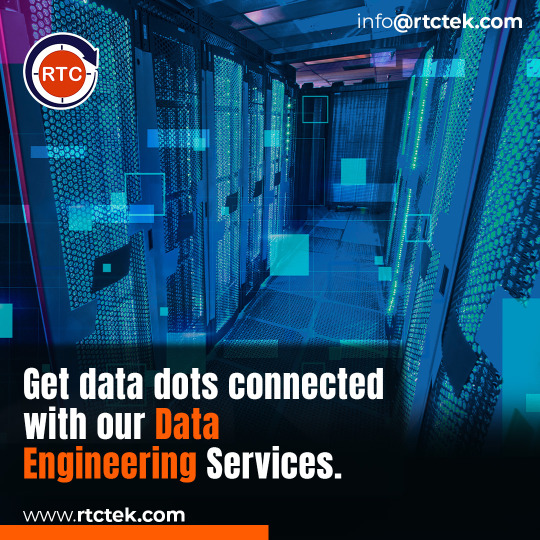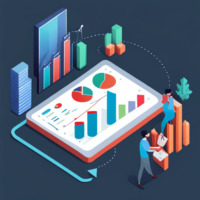#DataInfrastructure
Text
Allshares Forges Ahead As European Compensation Software Leader With Novare Pay Acquisition

Bregal Milestone, a well-known private equity firm specializing in technology and software in Europe, has recently acquired Novare Pay, a highly successful compensation services provider based in Stockholm. As a result of this acquisition, Bregal Milestone has appointed Michael Ingelög as the Chair of the Allshares Board, further strengthening their position in the market.
Novare Pay is renowned for its impressive growth and profitability in the European compensation services sector, with a strong focus on the Nordic region. By joining forces with Allshares, Novare Pay will contribute to the expansion of their digital turnkey offering, benefiting their extensive client base of over 630 organizations across more than 40 countries. This strategic move solidifies Allshares' position as one of the leading providers of compensation software and services in Europe, with enhanced capabilities in areas such as compensation data analysis, incentives, and governance. Following the acquisition, Novare Pay will undergo a rebranding process and operate under the Allshares name.
Erika Andersson, the CEO of Novare Pay, expressed enthusiasm about the acquisition, emphasizing the potential to improve service delivery through the implementation of advanced compensation software and drive transformative change in the European compensation landscape. Cyrus Shey, Co-Founder and Managing Partner at Bregal Milestone, warmly welcomed Novare Pay to the Allshares family, recognizing the partnership's ability to foster growth and deliver cutting-edge compensation solutions across Europe. The appointment of Michael Ingelög as the Chair of the Allshares Board further strengthens the leadership team, as he brings extensive experience as a CEO and board executive.
Bregal Milestone is a prominent private equity firm in Europe, specializing in providing growth capital and operational support to develop leading technology companies. Allshares, on the other hand, is a market leader in equity plan design and administration in the Nordic region, serving a diverse range of multinational public and private enterprise customers in over 100 countries. Novare Pay, with its expertise in remuneration services for multinational organizations, serves a substantial client base of over 900 companies across more than 60 countries.
Read More - https://www.techdogs.com/tech-news/business-wire/allshares-forges-ahead-as-european-compensation-software-leader-with-novare-pay-acquisition
0 notes
Text
Navigating the World of Data Engineering

Navigating the World of Data Engineering. An Overview of Data Infrastructure! Dive into the dynamic field of data engineering to learn the fundamental ideas and strategies for developing strong data systems. LSET's thorough handbook delves into data modelling, processing, and pipeline creation, providing a road map for creating scalable and efficient data infrastructure. In addition, the London School of Emerging Technology (LSET) Data Engineer Course will provide expert-led training and hands-on experience in mastering data engineering tools and processes. Join on a path to becoming a skilled data engineer, prepared to face difficult data issues and drive digital innovation.
Enrol @ https://lset.uk/ for admission.
0 notes
Text
Fiber-Optic Cable Market to See Sustainable Growth Ahead | GQ Research
The Fiber-Optic Cable market is set to witness remarkable growth, as indicated by recent market analysis conducted by GQ Research. In 2023, the global Fiber-Optic Cable market showcased a significant presence, boasting a valuation of US$ 11.50 Billion. This underscores the substantial demand for Fiber-Optic Cable technology and its widespread adoption across various industries.
Get Sample of this Report at: https://gqresearch.com/request-sample/global-fiber-optic-cable-market/

Projected Growth: Projections suggest that the Fiber-Optic Cable market will continue its upward trajectory, with a projected value of US$ 30 Billion by 2030. This growth is expected to be driven by technological advancements, increasing consumer demand, and expanding application areas.
Compound Annual Growth Rate (CAGR): The forecast period anticipates a Compound Annual Growth Rate (CAGR) of 15 %, reflecting a steady and robust growth rate for the Fiber-Optic Cable market over the coming years.
Technology Adoption: In the Fiber-Optic Cable market, advancements in technology are rapidly transforming the landscape of telecommunications and networking. From improved fiber-optic materials to enhanced manufacturing processes, technology adoption is driving the development of high-speed, high-capacity fiber-optic solutions that meet the growing demands of modern connectivity.
Application Diversity: The Fiber-Optic Cable market boasts a wide range of applications across various industries. From telecommunications and internet infrastructure to data centers, healthcare, and aerospace, fiber-optic cables play a vital role in enabling high-speed data transmission, video streaming, telecommunication services, and more, showcasing their versatility and adaptability to diverse needs.
Consumer Preferences: Consumer preferences in the Fiber-Optic Cable market are shaped by the demand for reliable, high-speed connectivity solutions. End-users prioritize fiber-optic cables that offer low latency, high bandwidth, and robust performance, enabling seamless communication, streaming, and data transfer. Additionally, there is a growing preference for eco-friendly and energy-efficient fiber-optic solutions that align with sustainability goals.
Technological Advancements: Continuous technological advancements drive innovation in the Fiber-Optic Cable market. From the development of next-generation fiber-optic materials to advancements in cable design, connectivity solutions, and network infrastructure, technological advancements are enhancing the speed, reliability, and efficiency of fiber-optic communication systems, enabling faster data transmission and greater network capacity.
Market Competition: Intense competition among fiber-optic cable manufacturers and service providers fuels innovation and drives product development in the Fiber-Optic Cable market. Companies differentiate themselves through technology leadership, product reliability, pricing strategies, and customer service, leading to a dynamic and competitive market environment characterized by rapid innovation and continuous improvement.
Environmental Considerations: Environmental sustainability is becoming increasingly important in the Fiber-Optic Cable market. Manufacturers are focusing on developing eco-friendly fiber-optic materials, reducing energy consumption in cable production, and implementing recycling programs to minimize environmental impact. Additionally, the use of fiber-optic cables for energy-efficient communication and networking solutions contributes to reducing carbon emissions and supporting green initiatives.
Regional Dynamics: Different regions may exhibit varying growth rates and adoption patterns influenced by factors such as consumer preferences, technological infrastructure and regulatory frameworks.
Key players in the industry include:
Yangtze Optical Fiber & Cable.
AFC Cable Systems
Optical Cable Corporation
Furukawa Electric Co. Ltd
Sumitomo Electric Industries Ltd
Fujikura Ltd
Corning Inc
Prysmian Group
Hitachi Cable Ltd
Sterlite technologies Ltd
The research report provides a comprehensive analysis of the Fiber-Optic Cable market, offering insights into current trends, market dynamics and future prospects. It explores key factors driving growth, challenges faced by the industry, and potential opportunities for market players.
For more information and to access a complimentary sample report, visit Link to Sample Report: https://gqresearch.com/request-sample/global-fiber-optic-cable-market/
About GQ Research:
GQ Research is a company that is creating cutting edge, futuristic and informative reports in many different areas. Some of the most common areas where we generate reports are industry reports, country reports, company reports and everything in between.
Contact:
Jessica Joyal
+1 (614) 602 2897 | +919284395731
Website - https://gqresearch.com/
0 notes
Text

Let us be your bridge for a seamless data journey. Our Data Engineering Services connect the dots to unlock actionable insights for your business. Learn more about our services at https://rtctek.com/data-engineering-services/.
#dataengineering#bigdata#datapipeline#dataintegration#etl#dataprocessing#dataarchitecture#datawarehousing#dataops#dataquality#dataanalytics#datascience#datamanagement#datainfrastructure#database#datatechnology
1 note
·
View note
Text
Custom Database Consulting Services | Cloud Database Solutions
#DatabaseConsulting#DataManagement#DatabaseOptimization#DataInfrastructure#DatabaseSolutions#DataArchitecture#DataPerformance#DatabaseExperts
1 note
·
View note
Text
1st Roadmap for Converting Big Data Actionable Intelligence

These days, information is more valuable than oil. The engine keeps companies running, influences policy, and generates new ideas. However, conventional data processing methods become inadequate when this data grows so large and complicated. Big Data is the phrase used to describe the enormous amounts of structured and unstructured data generated and received by organizations every day. However, it is more than the quantity of information that is crucial. What matters is what companies do with the information they collect. Better business choices and strategies may be made with the help of analysis of Big Data.
Just What Does "Big Data" Entail?

Big Data
Big Data is a term used to describe massive datasets that exceed the capabilities of conventional database management systems and data analysis software. It's about how much data there is and how fast it changes. Big Data may be collected from many different places and forms, from databases to social media postings to photographs and videos. Creating and analyzing this data quickly enough to suit real-time needs is also essential. The three Vs. (volume, variety, and velocity) are often used with the word.
Implementations of Big Data in the Real World
Big Data is everywhere. Facebook and Twitter, for example, process billions of daily posts, likes, and shares. Companies like Amazon and Alibaba, specializing in online retail, conduct millions of online transactions daily, creating a mountain of user data. Big data analytics are also utilized in the healthcare industry to examine patient information, treatment plans, and research data for trends and insights. Some current applications of Big Data include the ones listed above. Though, Big Data is having an impact across all industries.
Big Data's Journey from Fad to Functional Business Tool
Big Data was once only a phrase, but it has become necessary for modern businesses over the last decade. Companies of all sizes and sectors are investing in Big Data technology and tools because of the value they see in the information they collect, store, and analyze. Therefore, company strategy, operational efficiency, and consumer experiences now rely heavily on Big Data. In today's information-driven economy, it's no longer a luxury but a need for companies to maintain a competitive edge.
Recognizing the Foundations of Big Data
Big Data Can Be Divided Into Three Major Categories: Structured, Unstructured, and Semi-structured
Structured, unstructured, and semi-structured data are the three primary forms of Big Data. Structured data may be accessed and analyzed quickly and easily. Data in databases, spreadsheets, and customer relationship management systems are all included. On the other hand, unstructured data is challenging to examine and needs to be organized. Information such as emails, social media postings, and video clips are all part of it. Data like XML and JSON files are examples of semi-structured data. Most businesses deal with all three kinds of data, each with advantages and disadvantages.
Volume, Velocity, Variety, Veracity, Value, and Visualization are the seven "V's" of big data.
The 7 V's of Big Data serve as a guide for making sense of the many moving parts involved in Big Data. Volume describes how much data there is, velocity describes how quickly new data is being generated, variety describes the different types of data, integrity describes how reliable the data is, value describes how valid the data is, variability describes how inconsistent the data is, and visualization describes how the data is presented clearly and understandably. To successfully manage and use Big Data, it is essential to have a firm grasp on these facets and the problems and benefits they provide.
Technologies and Methodologies for Big Data
Hadoop and Spark's Importance for Big Data Processing
Common Big Data processing frameworks include Hadoop and Spark. Hadoop is a popular open-source software framework due to its capacity for storing and processing massive amounts of data in a parallel fashion over a network of computers. It processes Big Data in parallel by dividing it into smaller, more manageable parts. With this method, we can process more data per unit of time and simultaneously manage endless activities and jobs.
On the other hand, Spark is well-known for its rapid processing of massive datasets and user-friendliness. Because of its in-memory computing capabilities, this open-source distributed computing system processes Big Data significantly more quickly than Hadoop. Spark is widely used for Big Data analytics because of its efficiency in processing real-time data and compatibility with machine learning methods.
NoSQL Databases and Big Data Management
When dealing with Big Data, NoSQL databases are essential.
NoSQL databases are more versatile, scalable, and high-performing than relational databases because they can deal with unstructured data. They were developed to fill the gap left by relational databases while dealing with Big Data. NoSQL databases are well-suited to the heterogeneous nature of Big Data because they can store, process, and analyze information that doesn't conform to a traditional tabular model.
Real-Time Analytics' Explosive Growth and Its Effect on Big Data
The usage of Big Data in enterprises is being revolutionized by real-time analytics. It enables organizations to analyze data as it is being created, letting them adapt quickly to new circumstances. This is especially helpful when instantaneous reactions, such as banking fraud detection, e-commerce product suggestion, or navigation app traffic monitoring, are required.
Data Mining and Artificial Intelligence
The Role of Big Data in the Development of AI and ML
Artificial intelligence (AI) and machine learning (ML) run on Big Data. These tools need massive volumes of data to learn, make predictions, and grow. Machine learning algorithms, for instance, may sift through mountains of data in search of patterns and predictions. At the same time, artificial intelligence (AI) programs can hone their problem-solving and decision-making skills with the help of Big Data. For AI and ML to learn and adapt effectively, large amounts of data are required.

Insights Into The Future, Using Big Data And Predictive Analytics
Insights into the Future, using Big Data and Predictive Analytics
One of Big Data's most valuable functions is in predictive analytics. It analyzes past events with the use of machine learning and statistical algorithms. Predictive analytics is used by businesses to foresee future consumer actions, market developments, and financial results. Companies can anticipate future events and trends to make strategic choices and implement them.
The Role of Big Data in Organizations
How Big Data Is Giving Businesses a Leg Up
Companies use Big Data to give themselves an edge in the market. Big data analytics help them learn more about their clients, internal processes, and market tendencies. They may use this information to make educated business choices, boost their offerings, and provide better customer service. Big data allows companies to discover fresh prospects, increase productivity, and fuel creativity.
The Value of Big Data for Marketers Seeking Deeper Insight into Their Target Audiences and Industry
In marketing, Big Data is utilized to analyze consumer trends, likes, and dislikes. Marketers use consumer data analysis to tailor their strategies, boost loyalty, and encourage repeat business. Marketers may increase consumer satisfaction and loyalty by tailoring their communications to each individual's interests and habits.
Finance and Big Data: New Methods for Managing Risk and Investing
Big data is utilized for risk management and investing strategies in the financial sector. Financial organizations must evaluate massive amounts of financial data to mitigate losses, maximize returns, and meet regulatory standards. Big data is used by financial institutions for real-time fraud detection and by investment companies for trend analysis and investment decision-making, to name just two examples.
Big Data's Impact on Several Sectors
Big Data's Impact on Healthcare
Big data analytics is being utilized to enhance healthcare delivery and results. To make accurate diagnoses, provide effective treatments, and anticipate future health hazards, healthcare experts examine patient data. By collecting and analyzing patient records, clinicians may assess the risk of a patient contracting a disease and provide preventative care accordingly. Similarly, healthcare practitioners may learn which medications work best for certain illnesses by evaluating data on those treatments.
The Effects of Big Data on Consumer Goods and Industrial Production
Big data enhances processes and increases productivity in the retail and industrial sectors. Both retailers and manufacturers may benefit from analyzing sales data since doing so helps with inventory management, customer service, and lowering manufacturing costs. By monitoring sales data, for instance, stores may foresee which goods would be in high demand and refill appropriately. Similarly, producers may address production inefficiencies by evaluating production data.

Insights Into The Future, Using Big Data And Predictive Analytics
The Impact of Big Data on the Future of Education and Training
Big data is being utilized to improve education and student outcomes. Teachers use data analysis to tailor lessons to each student's needs, boost academic achievement, and boost learning outcomes. Teachers may help children who need it by assessing student performance data to determine which ones are having difficulties. Similarly, instructors might create individualized lesson plans for their students by examining their learning data.
Big Data: Its Perils and Potentials
Data Privacy and Compliance in the Age of Big Data
Big Data has many potential advantages but drawbacks, notably in data protection and regulatory compliance. The data a company collects, stores, and uses must be done legally and ethically. This includes using stringent data security measures, securing the required consent for data gathering, and guaranteeing the openness of data practices.
From Data-Driven Decision-Making to Innovation, Capitalizing on Big Data's Promise
Despite the difficulties, Big Data presents tremendous opportunities. Companies that know how to use Big Data will benefit from new insights, data-driven choices, and increased creativity. Big data allows companies to discover fresh prospects, boost productivity, and fuel creativity.
Strategies and Methods for Optimizing Big Data
Governance and Data Quality for Big Data Projects.
The success of Big Data projects depends heavily on the quality and management of their data. Businesses must guarantee their data's integrity, confidentiality, and safety. Effective data management also requires establishing data governance rules and procedures. Training employees on data management best practices and building data governance frameworks are all part of this process.
Leadership, Ethics, and Education for a Data-Driven Organization
To fully make use of Big Data, it is necessary to foster a data-driven culture. Creating a data-literate community requires establishing a norm of respect for data integrity and encouraging good data hygiene practices. Leaders play a critical role in developing a data-driven culture by setting an example, modeling the use of data, and encouraging others to do the same.
Big Data's Bright Future
The Internet of Things, Cloud Computing, and Other Future Big Data Technologies
Big data's promising future. New technologies, such as the Internet of Things (IoT) and cloud computing, produce unprecedented amounts of data, presenting exceptional data analysis and insight opportunities. From intelligent household appliances to factory-floor sensors, IoT gadgets provide a deluge of data that may be mined for helpful information. Similarly, cloud computing reduces the complexity and expense of storing and processing Big Data.
Big Data's Return on Investment: Examples and Success Stories
Big data has the potential to provide a substantial return on investment (ROI).
Numerous case studies and success stories show how Big Data has helped firms increase operations, provide better customer service, and fuel expansion. Businesses like Amazon and Netflix have turned to Big Data and personalized suggestions to serve their customers better. The healthcare industry has also utilized big data to improve patient care and results, increasing patient happiness and decreasing healthcare expenditures.
Summary: Using Big Data to Create a Better Tomorrow
To sum up, Big Data is changing how we work and live. It facilitates enhanced decision-making, operations, and consumer experiences for enterprises. It's assisting the healthcare industry, the education sector, and government agencies in better serving their constituents. Big Data's significance and usefulness will increase as we produce and amass more information.
Conclusion: Your Adventure Through the Big Data Horizon
Big data will become more crucial in the future. Understanding Big Data and its possibilities may help you navigate the future, whether you're a corporate leader, a data specialist, or a curious person. Get started in the Big Data world and learn how to use data to shape a better future.
Read the full article
#ArtificialIntelligence#BigData#BusinessIntelligence#DataAnalysis#DataGovernance#DataInfrastructure#DataIntegration#DataLakes#DataManagement#DataQuality#DataScience#DataSecurity#DataWarehousing#Hadoop#MachineLearning#NoSQL#PredictiveAnalytics#Spark
0 notes
Text
Metadata: 100 Guide to Understanding and Leveraging Data About Data

In this age of digitization, data has taken the place of gold. However, the component known as metadata is what gives this gold its actual value. This article will take you through the exciting world of metadata, illuminating its meaning, various types, examples, purpose, and other information.

Metadata
Metadata is a phrase that frequently comes up in conversations about big data, data management, and data science. And what exactly makes it so vital? This tutorial aims to provide an in-depth review of metadata and its function in the contemporary data landscape, to answer the issues posed here and others.
What Exactly Does It Mean to Have Metadata?
Metadata, sometimes known as 'data about data,' is information that either describes, locates, or in some other way makes it simpler to obtain, utilize, or manage data.
Metadata is a collection of data that, in addition to providing information about other data, also characterizes that data. A digital image may, for instance, contain metadata that portrays the picture in terms of its size, color depth, image resolution, when it was made, and a variety of other data. The metadata associated with a text document may include information such as the document's length, the author's name, the date the document was created, and a concise description of the document's content.
An Analysis of the Development of Metadata from a Historical Standpoint
The idea of metadata has been around for quite some time. It dates back to the beginning of structured collections of knowledge and has been around ever since. Metadata has always been essential to the rapid and easy retrieval of information, whether in the form of library card catalogs or the digital tags used on contemporary websites.
In the past, metadata was mainly utilized in libraries and archives to catalog papers and other items and retrieve them when needed. The usage of metadata has become substantially more widespread with the introduction of the internet and other forms of digital technology. Nowadays, metadata is utilized in various sectors, including digital libraries and databases, websites, and social media platforms, to name just a few examples.
The Importance of Metadata in Today's World and the Functions It Serves
Metadata is vital in the data-driven society that we live in today. It is helpful for various data-related tasks, including data management, data integration, data mining, and data governance. The metadata is responsible for making the data understandable and usable.
Metadata has a wide range of applications in the area of digital computing. Metadata is used by search engines so that they can comprehend the content of web pages and produce more accurate results. Metadata is the information digital cameras store regarding capturing a photograph. Social media networks use metadata to organize and classify postings.
What Kinds of Things Might Be Considered Metadata?
There is metadata in everything. The information, such as the date, time, location, and even the camera settings, are saved as metadata whenever you snap a picture with your smartphone. Examples of metadata include the artist's name, the song title, the album name, and the genre of a music file.
In Everyday Life: Examples of Common Uses for Metadata
Metadata is an essential component of everything we encounter in our lives, from the books in a library to the posts on social networking websites. It enables us to locate, organize, and comprehend information rapidly and effectively.
For instance, when you use a search engine to locate material online, you use metadata. The search engine analyzes metadata to comprehend the content of web pages and return results pertinent to the query. When you take a picture with your digital camera, the camera records information about the image. This metadata includes the date and time the photo was taken, the camera settings, and if your camera has a GPS feature, the picture's location. This metadata may be utilized later to categorize your photographs, locate specific graphics, or even understand the conditions when the image was shot.

The Role Of Metadata In The Online World
The Role of Metadata in the Online World: Illustrations from the Tech Sector
In the realm of information technology, metadata may serve many purposes. Websites, for instance, will often include metadata in meta tags to convey the page's subject matter to search engines. Databases employ metadata to give a roadmap to their material.
Metadata describes other information; for instance, the structure of a database, the types of data kept in the database, and how the data is arranged may all be described using metadata. It is possible to utilize this information to understand the structure of the database, compose queries that will obtain data from the database, and manage the data stored in the database.
Which Three Different Types of Metadata Are Correct?
It is possible to divide metadata into three distinct types: descriptive, structural, and administrative.
The Secret to Discoverability Lies Within Descriptive Metadata
Metadata that is descriptive contains things like the title, abstract, author, and keywords, all of which contribute to the process of locating and identifying data. The purpose of this kind of metadata is to give information that can assist in finding and distinguishing the data. For instance, a book's title, author, and keywords are all examples of descriptive information that might help you locate the book in a physical location such as a bookshop or library.
The blueprint for data organization is known as structural metadata.
The organization, structure, and kinds of data can be better understood with the help of structural metadata. It is a way of describing the arrangement of the individual parts of a dataset or item. For the sake of illustration, structural metadata for a book might include details such as the sequence in which the chapters are presented, the total number of pages, and the connection between the branches and the book.
Administrative metadata is known as the keeper and protector of data rights.
Administrative metadata may be used to administer a resource, such as the date and method of creation, the kind of file and any other relevant technical information, and the users authorized to use the help. The management and administration of data make use of this kind of metadata. An example of administrative metadata for a digital image may include:
The image's creation date.
The program used to make the image.
The rights and permissions are connected with the idea.
What is the Most Important Role That Metadata Plays?
The primary function of metadata is to make it easier to find important information, to make data administration more efficient, and to safeguard information so that it may be preserved.
Improving the Capability to Discover Data: The Part Played by Metadata
Metadata improves the discoverability of data by giving helpful information about the material. It assists users in locating the pertinent facts at the appropriate moment. When you use a search engine, for instance, to obtain information on the internet, the search engine uses metadata to interpret the content of web pages and offer search results relevant to your query.
Facilitating Data Management: How Metadata Contributes
By giving a context for the data that has been saved, metadata makes data administration much more effortless. It assists in integrating data, ensuring data quality, maintaining data stewardship, and managing data operations. For instance, metadata may be utilized in a database to understand the structure of the database, compose queries for retrieving data, and collect the data kept inside the database.

The Value Of Metadata In Protecting Users' Personal Information And Private Data
The Value of Metadata in Protecting Users' Personal Information and Private Data
Metadata is essential in protecting users' privacy and keeping their data secure. It explains who can access the data, where it should be housed, and how it should be safeguarded from unauthorized access. For instance, administrative metadata could contain information about the rights and permissions associated with a specific piece of data. This kind of information can control who has access to the data and what they are allowed to do with it by holding who has access to the data and what they are allowed to do with it.
The Value of Metadata in many Different Fields
Metadata is not only an idea; instead, it is a potent instrument that drives insights and choices across a variety of areas.
In data science, metadata is the engine that drives insights and predictions.
In data science, metadata is information about data that helps researchers understand the data better. It facilitates data analysis, data visualization, and data mining. In a dataset, metadata can offer information about the variables, their kinds, and their relationships. This information can be found in a dataset, which can be used to pick the proper analytic techniques and accurately interpret the findings.
Informing Strategic Decisions Through the Use of Metadata in Business Intelligence
In the realm of business intelligence, metadata is what supplies the context, which in turn enables more informed and effective strategic decision-making. It helps integrate data, manage data warehouses, and do data analytics. In a business intelligence system, for instance, metadata may be utilized to understand the structure of the data warehouse, compose queries to obtain data for use in reports and dashboards, and correctly interpret the results of those searches.
The role of metadata in data warehousing is to simplify storing and retrieving data.
Metadata is utilized in data warehousing to facilitate effective data organization, location, and retrieval. It enables data storage, data transfer, and data lifecycle management. For instance, in a data warehouse, metadata may be used to understand the structure of the warehouse, the types of data that are kept in the warehouse, and how the data is arranged. This understanding can then be used to effectively manage the data stored in the warehouse and efficiently retrieve data.
The Problems and the Answers in the Field of Metadata Management
Metadata is helpful, but keeping track of it has its own unique set of issues. Nevertheless, one can triumph over these obstacles by employing the appropriate tactics and resources.
The Most Frequently Encountered Problems in Metadata Management and How to Fix Them
Problems with data quality, a lack of standards, and worries about data security are some of the more prevalent obstacles associated with managing metadata. The implementation of data quality measures, the adoption of metadata standards, and the enforcement of data security regulations are all potential solutions.
Implementing data quality procedures such as data validation, cleansing, and auditing solves data quality problems.
Adopting metadata standards that establish criteria for the generation, usage, and administration of information can solve the problem of a need for more standardization. Concerns about data safety can be alleviated by implementing data security rules that restrict access to metadata, shield it from illegal access and change, and protect it from exposure to potential threats.
Guidelines for Efficient and Effective Management of Metadata
Implementing best practices for metadata management, such as setting explicit metadata policies, utilizing tools for metadata management, and routinely updating and evaluating metadata, is necessary to manage metadata effectively.
It is possible to guarantee that metadata is generated, utilized, and maintained in a manner that is consistent and successful by defining explicit metadata policies and putting them into place. Using metadata management solutions may assist in automating the process of creating, utilizing, and managing metadata, making the process more time-effective and less prone to mistakes. By evaluating and updating it regularly, it is possible to guarantee that metadata will continue to be accurate, relevant, and valuable. Trends and Forecasts Regarding the Development of Metadata: As we progress toward a future driven more and more by data, the metadata function will become even more critical.
Emerging Trends in Metadata Management
The use of artificial intelligence and machine learning in metadata production and administration is one example of an emerging trend in metadata management. Other examples include the rising relevance of metadata in data governance and the rise of metadata in the era of big data and the Internet of Things.
It is possible to employ AI and machine learning to automate the metadata production and administration process, resulting in increased productivity and precision. Metadata is gaining more attention due to the rising significance of data governance since it offers the context and understanding necessary to regulate data successfully. The advent of big data and the Internet of Things is leading to an explosion in the quantity of metadata since every piece of data created by these technologies comes with its own information set. This explosion in the amount of metadata is leading to an explosion in the number of data.
The Prospects for Metadata Soon: Predictions and Anticipations
The future of metadata has a lot of potential.
The value of metadata in data management and the decision-making process is expected to expand exponentially due to technological developments and increased awareness of the significance of data. The need for efficient metadata management will only grow as we continue to produce and consume more data in the future.
Summary: The Crucial Part That Metadata Plays in Today's Data-Driven World
In a world driven by data, metadata is an instrument that cannot be ignored. It gives the data context, making it more intelligible and valuable. Metadata is essential in all aspects of data science, business intelligence, and data warehousing, playing a necessary part in generating insights, forming choices, and optimizing business processes. Because the significance of metadata is expected to increase as we go closer to the future, it is a subject that is well worth investigating and becoming knowledgeable about.
Metadata is more than just 'data about data.'
It is the essential element that enables data to realize its full potential. By giving context, metadata makes data relevant and valuable. It allows us to locate the appropriate data at the right moment, comprehend the data we already have, and make educated decisions based on our data.
Metadata is becoming more significant in big data, characterized by an unprecedented increase in data amount, variety, and velocity. The metadata assists us in navigating the immense ocean of data, locating the information we require, and making efficient use of it.
The need for efficient metadata management will only grow as we continue to produce and consume more data in the future. The difficulties associated with managing metadata are accurate, but they can be surmounted with the appropriate approaches and technologies. We can guarantee our metadata's precision, use, and relevance if we implement the most effective procedures for managing metadata.
The outlook for metadata in the future is quite positive. The value of metadata in data management and the decision-making process is expected to expand exponentially due to technological developments and increased awareness of the significance of data. Understanding the power of metadata and using it effectively will be essential to our progress as we move toward a future that data will drive.
Read the full article
#BusinessIntelligence#DataAnalysis#DataCompliance#DataGovernance#DataInfrastructure#DataIntegration#DataLifecycle#DataManagement#DataMigration#DataMining#DataOperations#DataPrivacy#DataProcessing#DataQuality#DataScience#DataSecurity#DataStandards#DataStewardship#DataStorage#DataStrategy#DataSystems#DataTransformation#DataVisualization#DataWarehousing#Metadata
0 notes
Link
#trending #procommun #finance #crypto #nft #stories #webstories #shorts #learning #SGXNIFTY Data Engineer V/S Data Scientist: How Are They Different?
0 notes
Text
"How DBaaS Enhances Efficiency and Security in Data Management"
Database as a Service (DBaaS) is revolutionizing data management by offering scalable, cost-effective, and fully managed database solutions over the cloud.
https://www.globalinsightservices.com/request-sample/GIS25093@/?utm_source=SnehaPatil-Article
This service model allows organizations to outsource the complexities of database administration, such as provisioning, scaling, and maintenance, to specialized providers. By leveraging DBaaS, businesses can focus on their core activities while benefiting from high performance, robust security, and automatic backups. The flexibility and efficiency of DBaaS make it an attractive option for enterprises looking to optimize their data infrastructure and support rapid application development and deployment.#DBaaS #CloudDatabase #DataManagement #ScalableSolutions #DatabaseAdmin #DataSecurity #TechInnovation #CloudComputing #DataInfrastructure #ManagedServices #BusinessEfficiency #ITOptimization #DatabaseScaling #TechSolutions #EnterpriseIT
0 notes
Text
Modular Data Centers: Revolutionizing Data Infrastructure
Modular data centers represent a seismic shift in the way organizations approach their data infrastructure needs, offering unparalleled flexibility, scalability, and efficiency.
These self-contained units are designed to house critical IT components within a modular framework, enabling rapid deployment, expansion, and relocation as business requirements evolve. By decoupling infrastructure elements such as power, cooling, and computing resources, modular data centers empower organizations to scale their IT infrastructure rapidly and cost-effectively, without the need for extensive construction or retrofitting. Moreover, these data centers leverage innovative cooling technologies and energy-efficient designs to optimize resource utilization and reduce environmental impact, making them a sustainable choice for organizations committed to green initiatives. With their plug-and-play functionality and streamlined deployment process, modular data centers enable organizations to accelerate time-to-market for new services and applications, driving agility and innovation in today's fast-paced digital landscape. As organizations continue to embrace digital transformation and the era of big data, modular data centers emerge as a cornerstone of modern data infrastructure, providing the scalability, flexibility, and efficiency required to thrive in the digital age. #ModularDataCenter #DataInfrastructure #Scalability #Efficiency #GreenTechnology #Sustainability #DataManagement #DataCenterDeployment #Agility #Innovation #DigitalTransformation #ITInfrastructure #EnergyEfficiency #CoolingTechnologies #PlugAndPlay #BusinessGrowth
0 notes
Text
Future-proof your data network architecture. #FutureReady #DataInfrastructure
https://tiadrop.me/
0 notes
Text
BIG DATA CAREER PATHS
The era of Big Data has brought about a revolution in the world of business and technology. Theexplosion of data has created an immense demand for professionals with expertise in big datatechnologies. If you are interested in pursuing a career in big data, Join the best hadoop training institutes in chennai-
ICONGEN
Big Data Career Paths:
Big Data Analyst: As a big data analyst, you will be responsible for collecting, analyzing, andinterpreting large volumes of data to identify trends, patterns, and insights. You will use tools suchas Hadoop, Spark, and SQL to manipulate and analyze data.
Big Data Engineer:
As a big data engineer, you will be responsible for designing, building, and maintaining big datainfrastructure. This includes creating data pipelines, setting up clusters, and ensuring data security.A big data engineer should have a solid understanding of big data technologies such as Hadoop,Spark, and NoSQL databases.
Data Scientist:
A data scientist is responsible for developing models and algorithms that help organizations makedata-driven decisions. You will use statistical analysis, machine learning, and data miningtechniques to extract insights from data. A data scientist should have a strong foundation inmathematics, statistics, and computer science.
Big Data Architect:
A big data architect is responsible for designing and implementing big data solutions that meet the needs of an organization. This includes defining data requirements, selecting appropriate technologies, and ensuring scalability and performance. A big data architect should have a strong understanding of big data technologies, database design, and software development.
Skills Required:
To succeed in a career in big data, you need to have a combination of technical and soft skills. Hereare some of the skills that are required to succeed in this field:
Technical Skills:
You should have a strong understanding of big data technologies such as Hadoop, Spark, andNoSQL databases. You should also be proficient in programming languages such as Java, Python,and R. Analytical Skills: You should have strong analytical skills to identify trends, patterns, andinsights from data. You should be able to work with large volumes of data and analyze themeciently.
Communication Skills:
You should have excellent communication skills to explain complex data analysis to non-technicalstakeholders. You should be able to communicate the insights you have gained from data analysis ina clear and concise manner. Problem-Solving Skills: You should have strong problem-solving skills tosolve complex data-related problems. You should be able to identify the root cause of the problemand come up with a solution.
Conclusion:
Big data is a growing field with immense opportunities. If you are interested in pursuing a career inbig data, you should have a strong foundation in big data technologies, programming languages, andstatistics. You should also have strong analytical, communication, and problem-solving skills tosucceed in this field. With the right skills and experience, you can build a successful career in bigdata and make a significant contribution to the world of technology and business.
0 notes
Photo

They say you should use a prop to get your point across. I took notes! One more session today and then we close for this year's WWAS. HPE DevOps for DataInfrastructure (get the handbook from IT Revolution)
1 note
·
View note
Text

We can turn your data into a strategic asset. Our Data Engineering Services are designed to take your data to the next level. Join us on the journey to data-driven success. Learn more about our services at Data Engineering Services | Big Data Engineering Services - Round The Clock Technologies (rtctek.com).
#dataengineering#bigdata#datapipeline#dataintegration#etl#dataprocessing#dataarchitecture#datawarehousing#dataops#dataquality#dataanalytics#datascience#datamanagement#datainfrastructure#database#datatechnology
0 notes
Video
#programming #nerdswagg #swaggy #swaggsurfin #abstractdatatypes #layout #dataorganization #datainfrastructure #structuredforcleanliness
#datainfrastructure#swaggy#nerdswagg#programming#swaggsurfin#structuredforcleanliness#layout#abstractdatatypes#dataorganization
0 notes